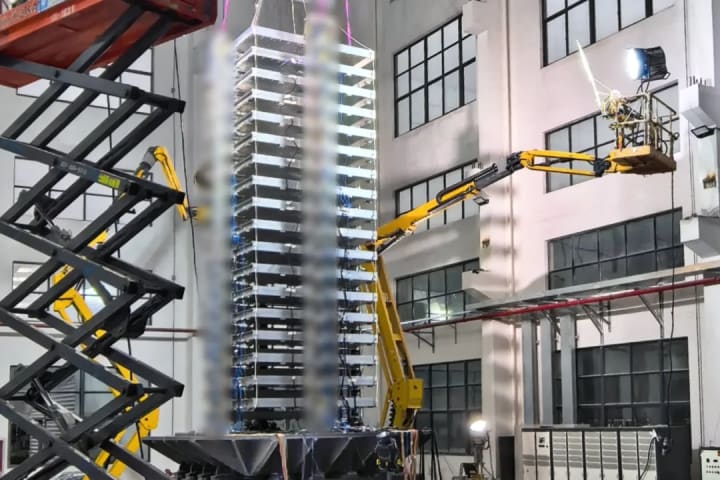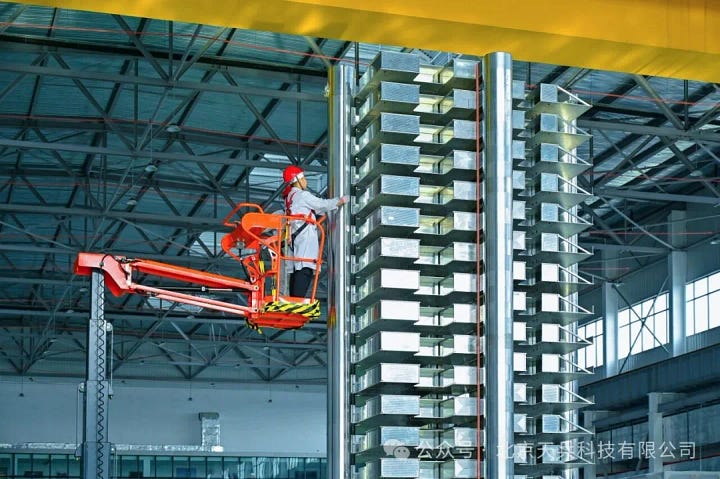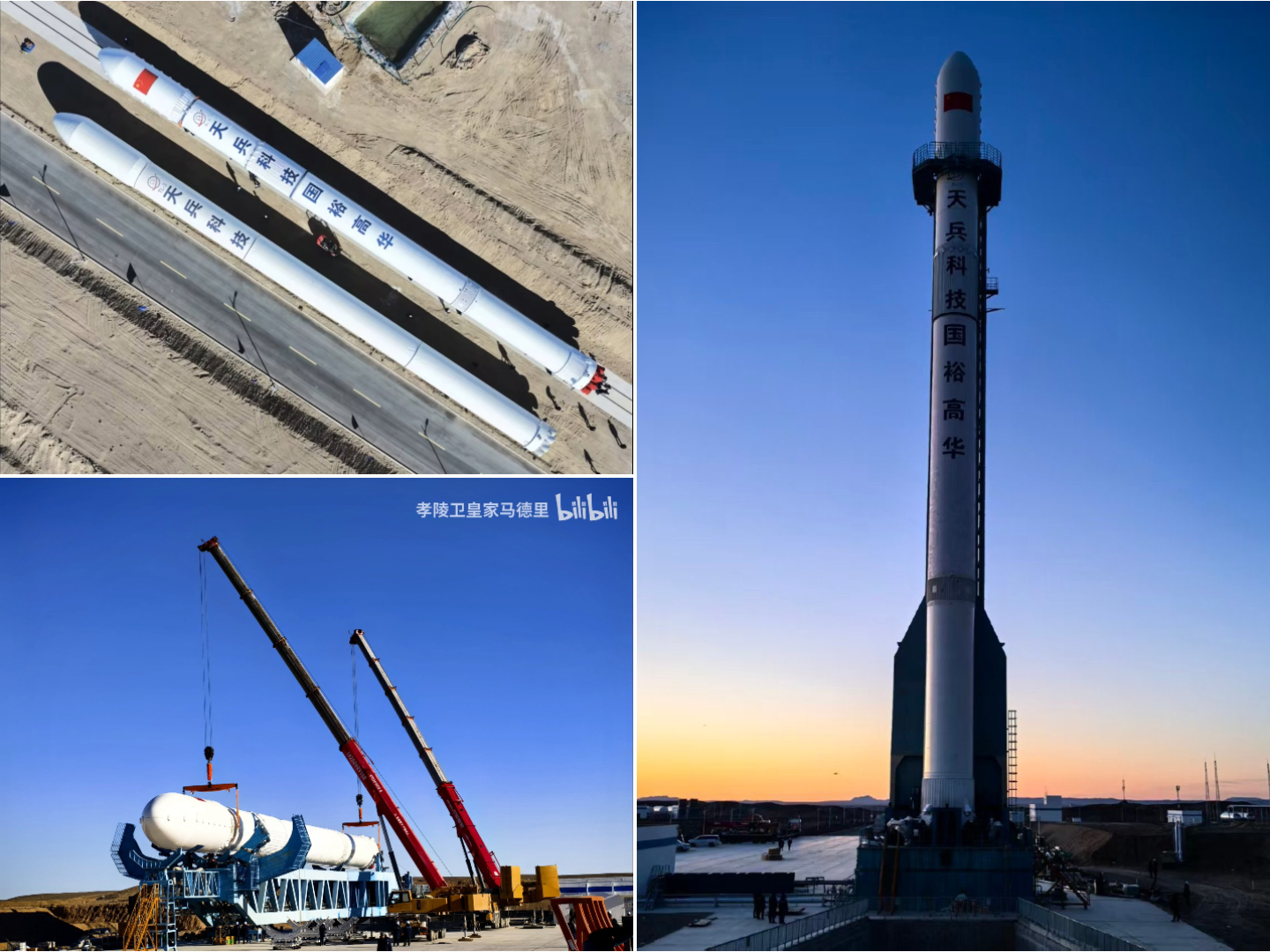Tianlong-3 Quietly Arrives at Jiuquan Ahead of Several Reusable Rocket Debuts
Space Pioneer's 72-meter-tall reusable rocket is on the launch pad as the company eyes launching enlarged constellation satellite batches.

Having departed from Zhangjiagang (张家港市)1 on November 7th, Space Pioneer’s two-stage partially reusable Tianlong-3 launch vehicle arrived at the company’s Jiuquan Satellite Launch Center facilities before November 18th, with it being confirmed by the sharing of an image of the rocket after an unrelated test. It’s unclear when Tianlong-3 arrived, but it has since been assembled and placed onto its launch pad, as a now-deleted video showed that it is flight hardware.
At the launch site, the company has built and tested a launch pad, a horizontal vehicle assembly building, propellant storage tanks, and plumbing to fuel the rocket, a flame trench underneath a launch table with a transporter-erector, tested back in July 2024, and two massive lightning towers. In the future, Space Pioneer’s Jiuquan operations will be expanded to support two simultaneous launch campaigns, for up to sixty per year, with at least a second launch pad.
Now with a flight vehicle on the launch pad, Space Pioneer can test the vehicle and assess its flight readiness by fully loading it with rocket-grade kerosene and liquid oxygen, possibly for a short static fire, as it would weigh 590,000 kilograms while being held down. That would be Space Pioneer’s third firing of the booster, after a successful test in September.
Based on images of Tianlong-3 around Jiuquan, the vehicle appears to meet its 72-meter-tall, 3.8-meter-wide design with a 4.2-meter-diameter fairing, allowing it to carry up to 17,000 kilograms to low Earth orbit, powered by a total of ten TH-12 engines2. Notably, no first-stage reuse hardware3 or mounting points for it are present, meaning the rocket’s debut flight should be an expendable test of the full system.
Other than to-be-found potential hardware issues, a holdup for Tianlong-3’s debut is the November 25th launch of the Shenzhou-22 spacecraft to the Tiangong Space Station, as human spaceflight missions have priority allocation of site resources. When Tianlong-3 may liftoff, only Space Pioneer knows.
Several other reusable rockets will potentially launch from the Jiuquan Satellite Launch Center in the coming weeks, including: LandSpace’s Zhuque-3, which is on the launch pad following static fires; Galactic Energy’s Pallas-1, having completed first and second-stage static fires; CAS Space’s fully-fired, assembled, and shipped Kinetica-2; as well as the very anonymous Long March 12A and Kuaizhou-6 from ExPace.
Deploying more Qianfan satellites
As Tianlong-3 was being sent to Jiuquan, Space Pioneer’s external communications were focused on a November 18th-published thirty-six satellite testing set, where an inert stack of dummy spacecraft was vibrated and transported to verify their deployment mechanism, which had a separation test late last month.
While the company did not say what constellation the test was relevant to, it was obviously for the Shanghai-backed Qianfan (千帆), as it is China’s only flat-packed satellite being regularly deployed. Adding onto that, Genesat (格思航天), a major manufacturer for the constellation, wrote about a vibration test of a thirty-six satellite stack’s deployment mechanism on the same day.


Space Pioneer is one of three companies, the others being LandSpace and CAS Space, to have won a contract to prove that they can launch eighteen Qianfan satellites. If successfully fulfilled, that contract is likely to be modified and extended to allow for the deployment of a larger satellite batch, either thirty-six or fifty-four.
Shanghai Spacesail Technologies, the operator of the constellation, is keen to have more spacecraft in orbit, so services can begin to be rolled out. Launching larger batches of satellites will allow for a faster rollout and a better service. Originally, by the end of 2025, 756 satellites were meant to be in orbit; so far, 108 have been deployed.
A city of 1.25 million people in Jiangsu (江苏) province, about 140 kilometers from Shanghai.
Nine sea-level optimized engines on the first-stage and a single vacuum optimized engine on the second-stage.
Four grid fins for guiding the first-stage booster during unpowered descent and four landing legs to enable a soft touchdown.



